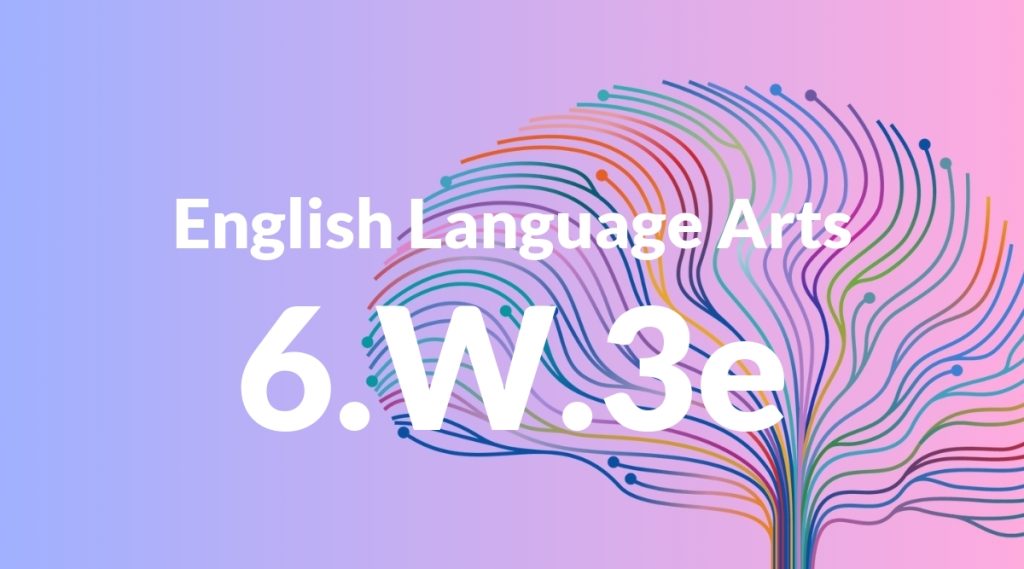Standard: 6.W.3e – Provide a conclusion that follows from the narrated experiences or events.
Grade level: Grade 6
Subject: English Language Arts
Domain: Writing
Teacher Overview
This standard focuses on teaching students how to effectively conclude their narratives and essays. It is an essential part of writing that ensures the reader feels a sense of closure and completeness at the end of a piece. Mastery of this skill is crucial for students as they progress to more advanced writing tasks. Students need to understand the basic structure of a narrative and have experience writing simple stories or essays. They should be familiar with the concepts of beginning, middle, and end, and have some practice in summarizing their ideas.
Students will develop the ability to write more complex and cohesive narratives and essays. They will also be able to critically analyze and improve their own writing and that of others, ensuring that their conclusions provide a satisfying end to their work.
Common Misconception 1
A common misconception is that a conclusion is merely a summary of the main points. This is incorrect because a conclusion should do more than just recap; it should provide closure and reflect on the narrative or events.
Intervention 1
One effective intervention is to provide students with examples of strong conclusions that offer closure and reflection. Discuss these examples in class and have students practice writing their own conclusions based on these models.
Common Misconception 2
Another misconception is that a conclusion should introduce new information. This is incorrect because introducing new ideas can confuse the reader and detract from the sense of closure that a conclusion should provide.
Intervention 2
To address this misconception, emphasize the importance of maintaining focus in the conclusion. Provide exercises where students identify and revise conclusions that improperly introduce new information.
Prerequisite Knowledge
Students should understand the structure of a narrative, including the beginning, middle, and end. They should also be familiar with basic writing techniques and have experience writing simple stories or essays.
Subsequent Knowledge
After mastering this standard, students will be able to craft more complex narratives and essays with coherent and impactful conclusions. They will also be prepared to analyze and critique the conclusions of other writers.
Instructional Activities
- Analyze sample conclusions from various texts and discuss their effectiveness.
- Practice writing conclusions for given narratives or essays.
- Conduct peer review sessions focusing on the conclusion of each student’s work.
- Create a checklist for writing effective conclusions and use it during writing assignments.
- Role-play scenarios where students must verbally summarize and conclude a story.




